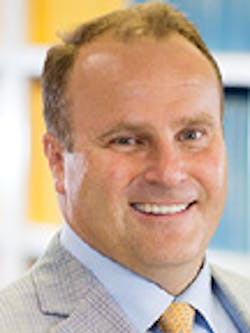A new era in implant dentistry: Evolving technology creates efficiencies and makes dental care more affordable for patients
A new era in implant dentistry
Mark McOmie, DMD
The year was 2001. I had been out of dental school for three years and was very happy with our practice. My wife and I had met in dental school and married when we graduated. Shortly thereafter, we did the unthinkable. We started a dental practice from scratch. Many told us not to, and although we were nervous, we did it. Things were going great. Our practice was growing rapidly, and we were profitable.
We decided we would like to get into dental implants—not just restoring implants that specialists had placed for us, but doing the placement surgery as well. We researched courses and finally decided to take a course in Provo, Utah, from Dr. Gordon Christensen. We went to two hands-on courses, trying a half dozen or more implant systems in the process. We came home feeling confident about doing simple posterior implant surgery. We both liked the same dental implant system. We made a large investment with the company and started placing implants. It was exciting and fun.
The implants we were buying cost about $600 for the implant itself, $300 for stock abutments, and $50 for a healing abutment. We were trying to deliver a service at a price people in our community could afford. Just the parts on an implant were running close to $1,000, sometimes more. Our implant representative came in one day and told us the company was increasing our fee for an implant by $50 and removing the cover screw from the implant package. The cover screw would cost an additional $50 instead of being included in the package. This would increase our cost per implant by $100. Our rep then told us about the lavish annual session in Las Vegas, where the company had the penthouse suite at the Bellagio and held parties where Cirque du Soleil performed in the suite for them.
At the same time, I remember wondering, How can a screw cost $50? It seemed ridiculous. My patients are average people, living on budgets, saving, and scrimping to afford dental services. How can I raise my price just to cover the implant rep’s fee increases? I thought more about this, and it looked to me like a market that had a bubble. In other words, fees were increasing in ways that didn’t make sense. This couldn’t go on forever.
Apparently, these sentiments were shared by Gerald Niznick, DMD, MSD, the founder of Core-Vent and Paragon Dental Implants, who later sold the company to Zimmer Dental. The Screw-Vent internal hex implant that he developed is the “Zimmer system” we refer to today. In 2004, Dr. Niznick began working on a new dental implant company, where he would make high-quality products, including clones of many products from the big companies, but at a fraction of the cost. He launched Implant Direct in 2006 and it changed the industry. Implant Direct offered the implant, stock abutment, impression analog, and cover screw all for about $100. This was industry changing—it caused the price of dental implants to change.
Soon, all of the implant companies started lowering their prices and offering large discounts. The beneficiaries were the dentists and ultimately the patients. We could lower our implant prices, increase the number of implants we placed, and increase our profit, all at the same time. Today, we can buy Implant Direct implants in the range of $180–$240 with varying mixes of components. The company has a large market share, especially among general dentists.
A more recent entrant is the Israeli implant company, Paltop, with its implant retailing at $150. The company is new to the US, but it has been growing in Europe and South America since 2009. Its business model is intriguing: Paltop has dental laboratories that supply implants, attachments, and parts. Labs such as Oral Arts Dental Lab in Huntsville, Alabama, serve as its distributors. It does make a certain bit of sense to get your implant and the parts you need to restore your case in one place. Glidewell has manufactured its own implants and offered them to its customers for years, so that model has already been tested. But it’s interesting to see a new implant company tap into the dental lab network for distribution.
While dental labs and implant companies have disrupted the status quo on their end, I have also found ways to introduce efficiencies into my workflow. Three years ago, I invested in a Trios intraoral scanner (3Shape). This has proven to restore implants as well as crowns and partials. Efficiency and accuracy are improved drastically with the Trios scanner. Fewer steps mean less opportunity for error. Oral Arts is able to fabricate screw-retained implant restorations without a model using scan bodies. Up until now, we have had to use different scan bodies for crowns made with and without models. We can make either with the Paltop scan body, thus eliminating the need for multiple scan bodies in each size. Using scan bodies instead of open- and closed-tray impression copings saves us money. We only have a few scan bodies and can use them over and over. Impression copings travel with the case, and they are expensive. You can even use the same scan body several times on the same case.
Dental implants have come a long way from both the technology and business standpoints. As technology evolves, implant companies, dental labs, and dentists are all able to realize efficiencies in time and cost. Those savings can improve the bottom lines for all of us, and this savings can be passed down to our patients by making care more affordable.
Mark McOmie, DMD—a general dentist with a focus on cosmetic and implant dentistry—practices in a fee-for-service private dental office with his wife, Ellen, that they started from scratch. An expert in dental materials, he is a dental researcher for Dr. Gordon Christensen’s CR Foundation, evaluating more than 400 materials to date, as well as a consultant for several dental companies and laboratories.

